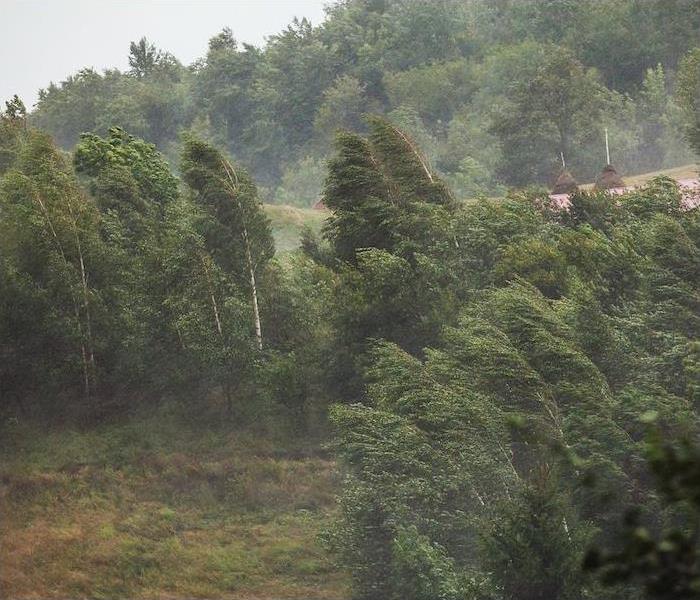It’s Windy Out There! Prepare Your Home | SERVPRO® of Cape Girardeau & Scott Counties
6/9/2023 (Permalink)
 If you've suffered from storm-related damage to your home or business, make SERVPRO of Cape Girardeau & Scott Counties your first call.
If you've suffered from storm-related damage to your home or business, make SERVPRO of Cape Girardeau & Scott Counties your first call.
When a soft breeze whips through your hair on a hot day, it can feel like a sweet gift from the earth. You can’t see the wind, but it is one of those ever-present things we know we can count on being there—even when we may not want it to be.
While a cool breeze can leave you feeling great, when wind gets strong, it can be incredibly destructive and leave your home in complete ruins. Strong winds are often associated with severe storms, but they can blow even when the skies are blue outside.
Get to know more about strong winds and the damage they can cause, then take steps to protect your home and keep your loved ones safe.
The Different Kinds of Wind
More than half of reported damaging winds originate from thunderstorms, even more than from tornadoes. It’s a threat you shouldn’t take lightly.
We’re no strangers to heavy winds. In February, strong winds knocked down trees and took the awning off a favorite local spot, Mana Tea.
Thunderstorms come with a variety of threats, but the wind in these storms can commonly reach up to 60 miles per hour. At that speed, debris can be kicked around yards easily. Storms with high winds are a common occurrence in our area, particularly in the spring and summer.
Straight-line winds are one kind of wind that often result from thunderstorms. These can be wide-reaching winds of up to 100 miles per hour, and they can leave behind damages even in areas that don’t see any rain. Straight-line winds refer to any kind of wind that isn’t associated with rotation.
Tornadoes, like thunderstorms, carry a wide variety of threats. These storms are particularly damaging because of the different kinds of winds that come with them, and they can be a fairly common threat here in the Cape.
Tornadoes often contain straight-line winds, downdrafts and bursts called micro- and macro-bursts. All of these different kinds of winds add up to equal a total path of destruction for anything they come across.
Wind Damage and Prevention
Downed trees, blown-around debris and damaged power lines are some of the most common kinds of wind damage, but even an anchored mobile home can be severely damaged when winds are over 80 miles per hour.
One of the best ways to stay safe is to understand the different weather alerts associated with high winds so that you can act accordingly to seek protection. Securing loose objects that are outside permanently (porch chairs, trash cans, benches) is another way to prevent damage that you can do long before the wind starts blowing.
Keep your trees trimmed, and consider professional maintenance every five to 10 years to take care of particularly tall trees. Remove loose limbs in your yard frequently, as well as anything else that can become projectile objects in the wind.
Locate an interior room in your home where you can avoid windows if an alert is issued. You might also consider investing in storm shutters that can protect your home.
Once the winds have subsided, walk around your house and property to check for damage. Pay particular attention to your roof so you can replace shingles or other damage before water can start seeping in. Call SERVPRO® if you do have damage, and we will get your home back together quickly.
Has your home been damaged by wind? Call us and get things cleaned up fast.





 24/7 Emergency Service
24/7 Emergency Service